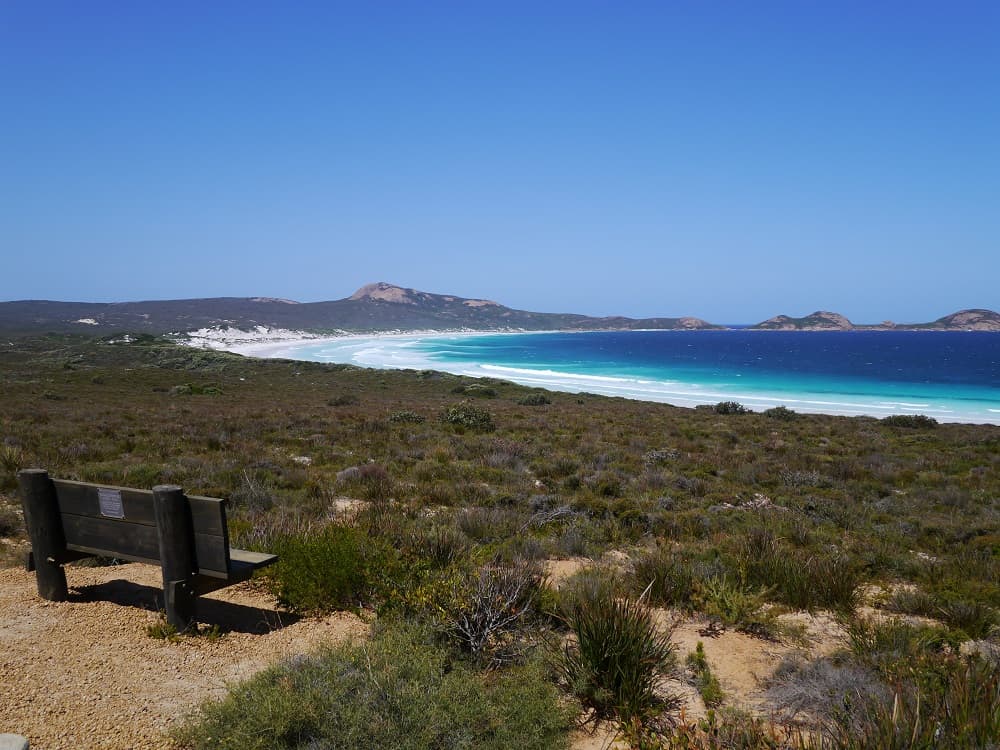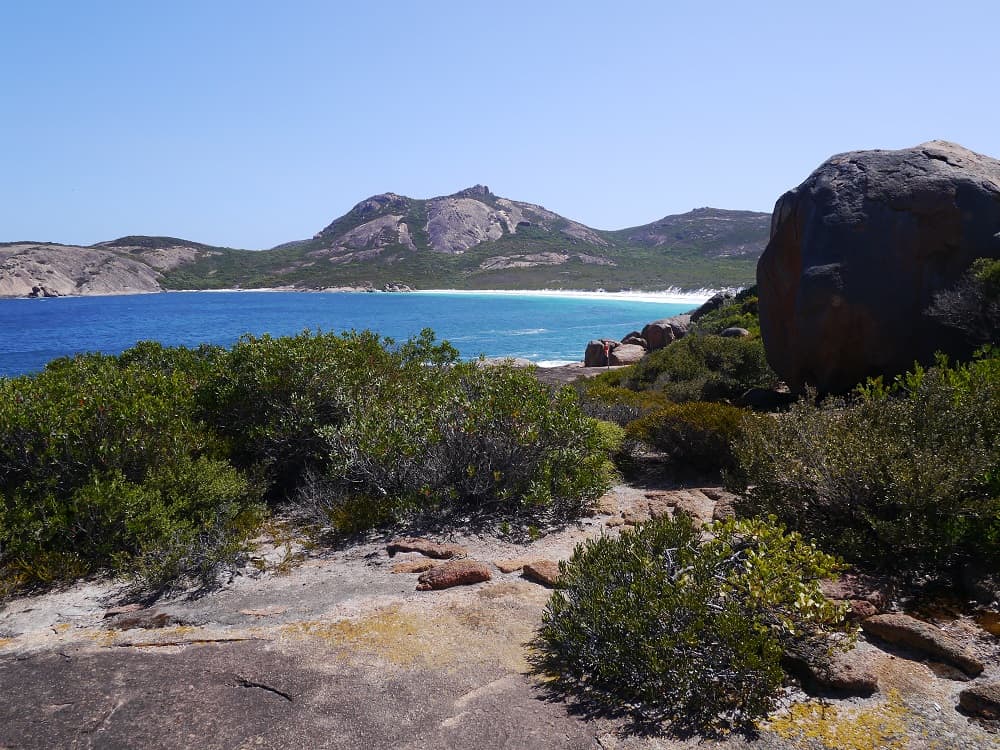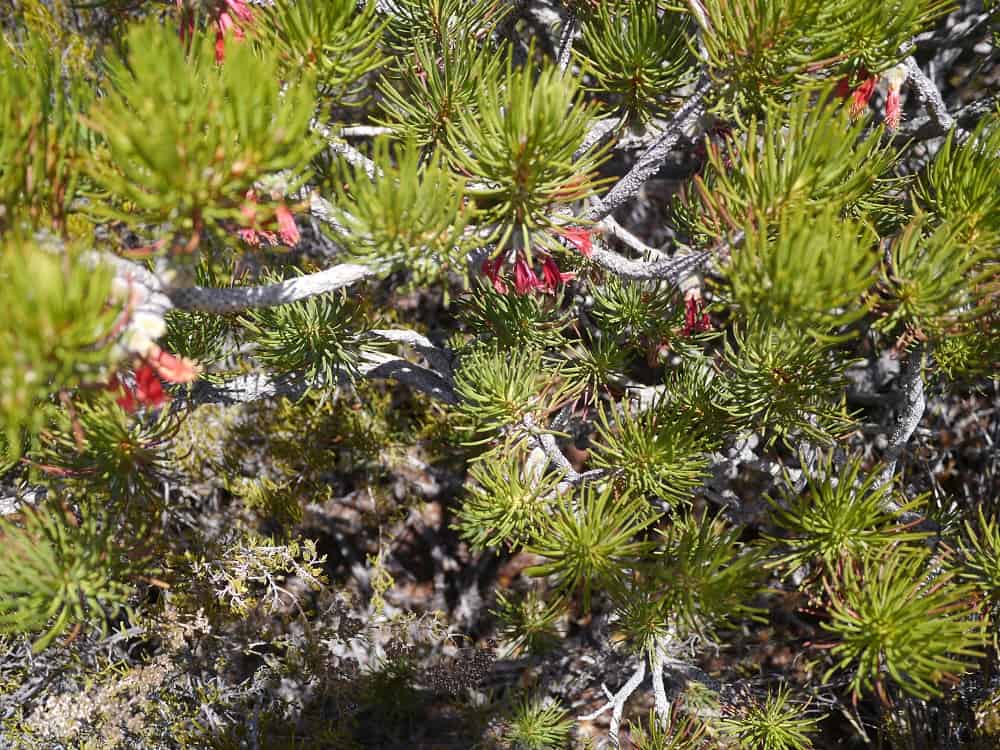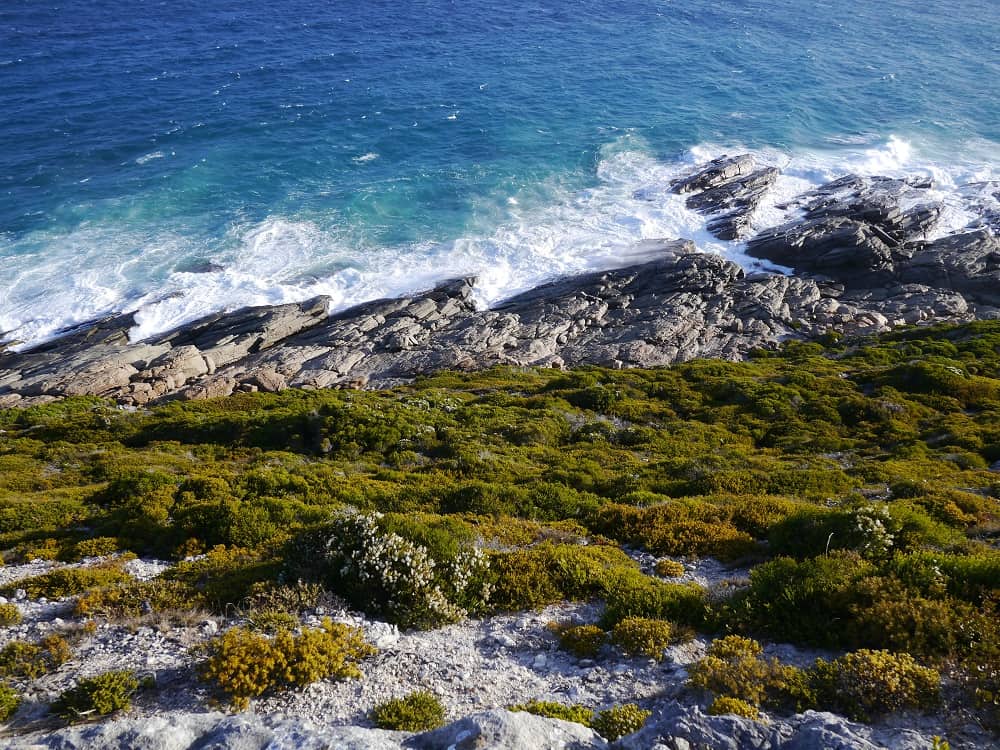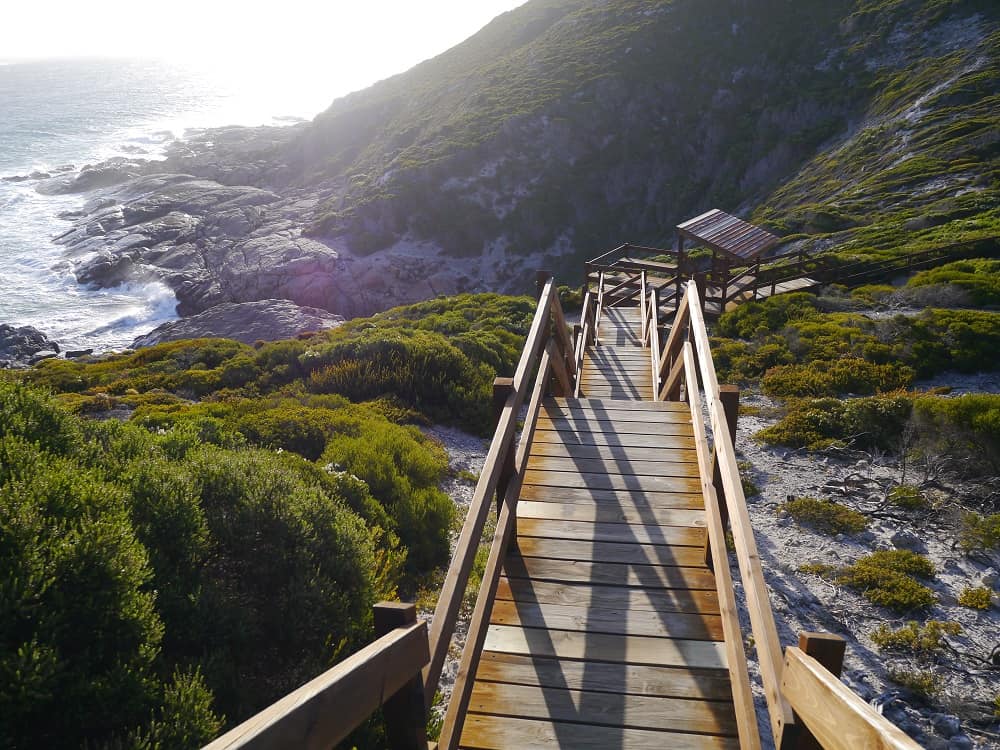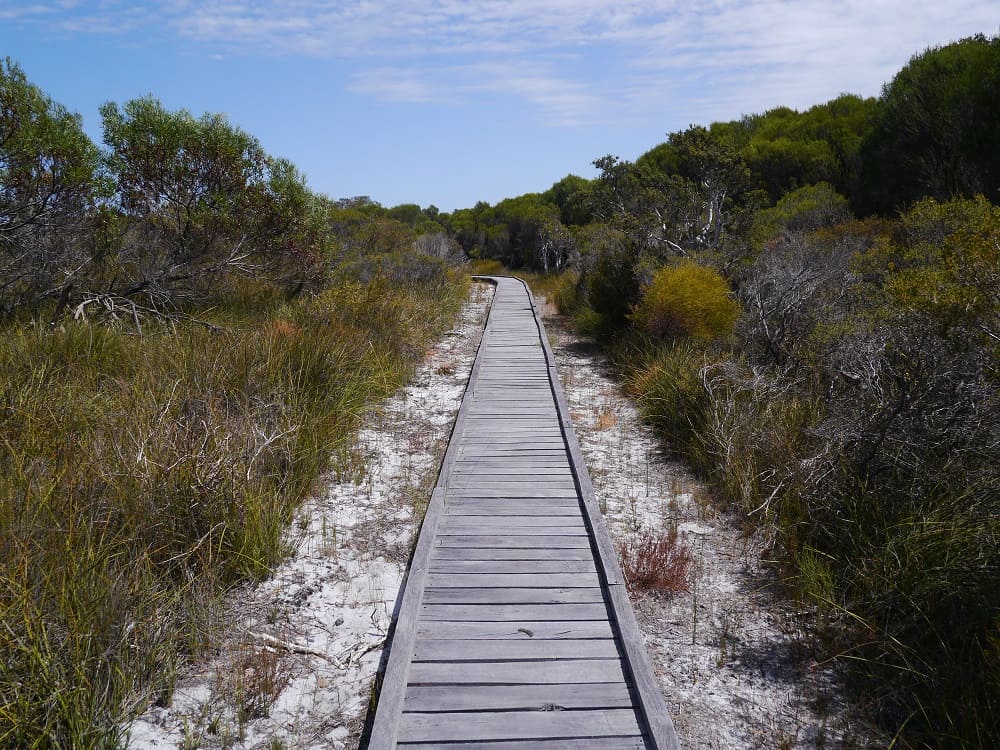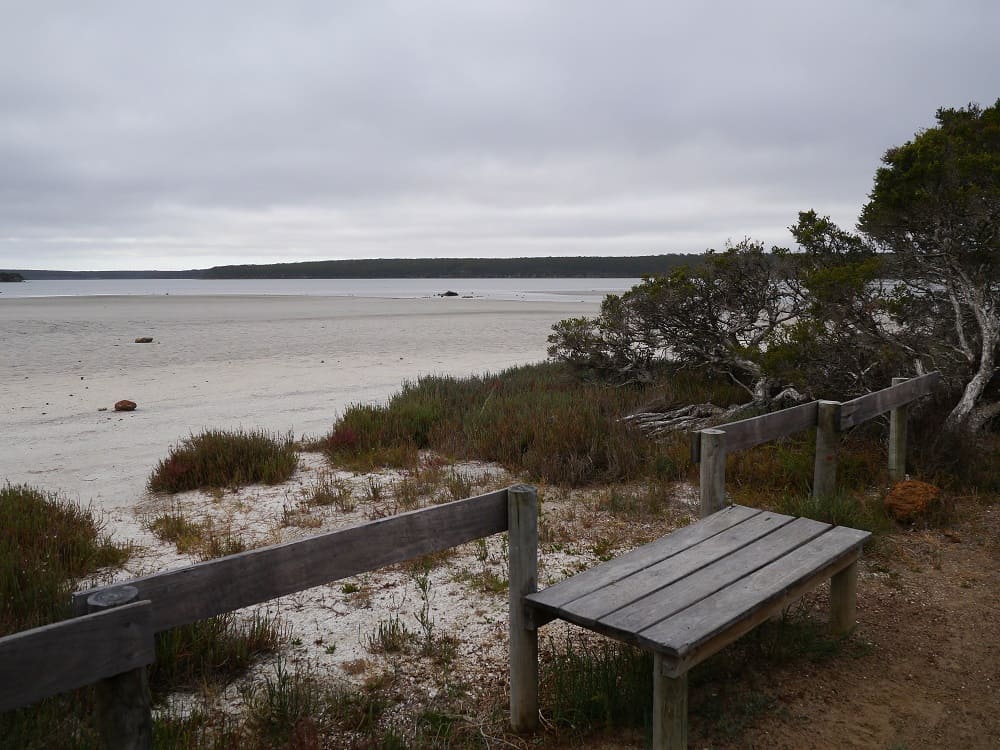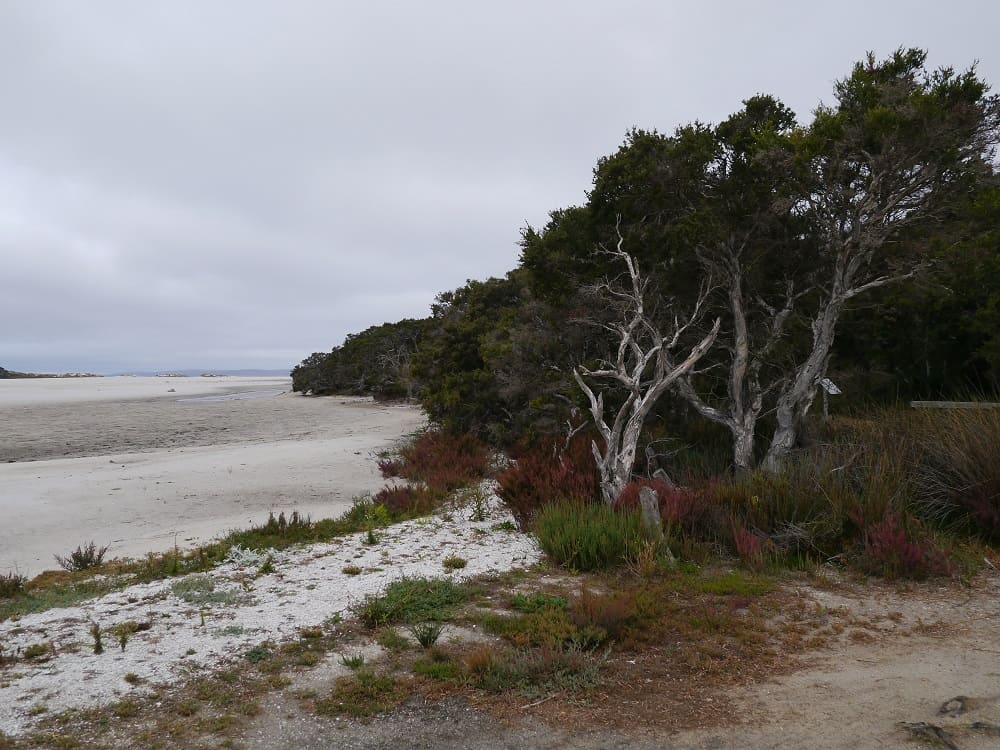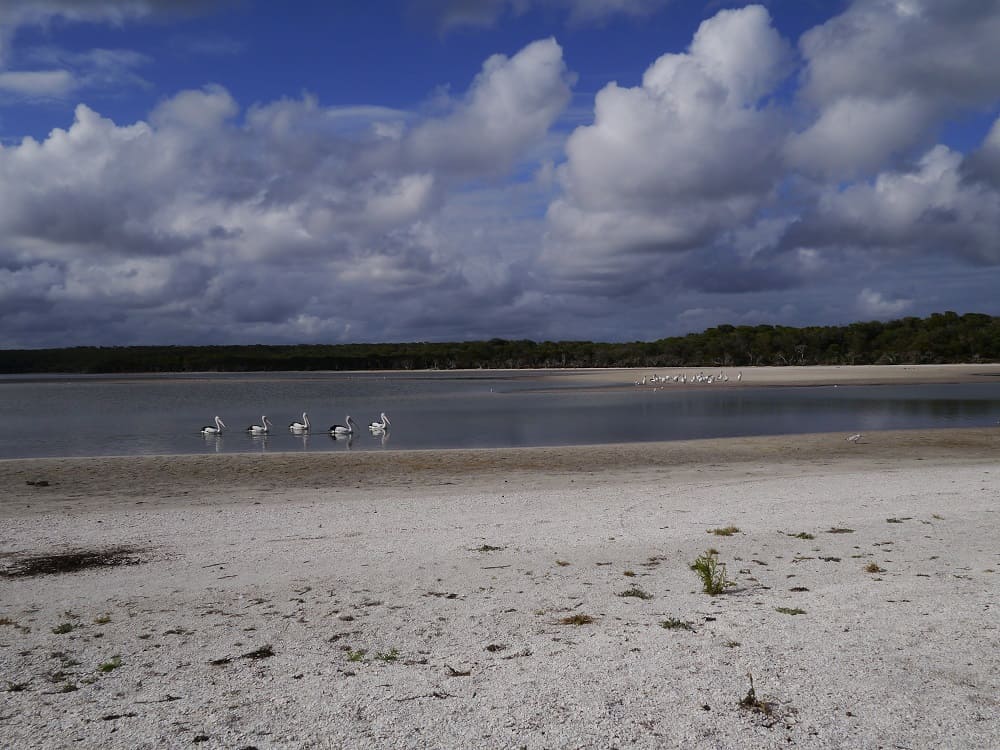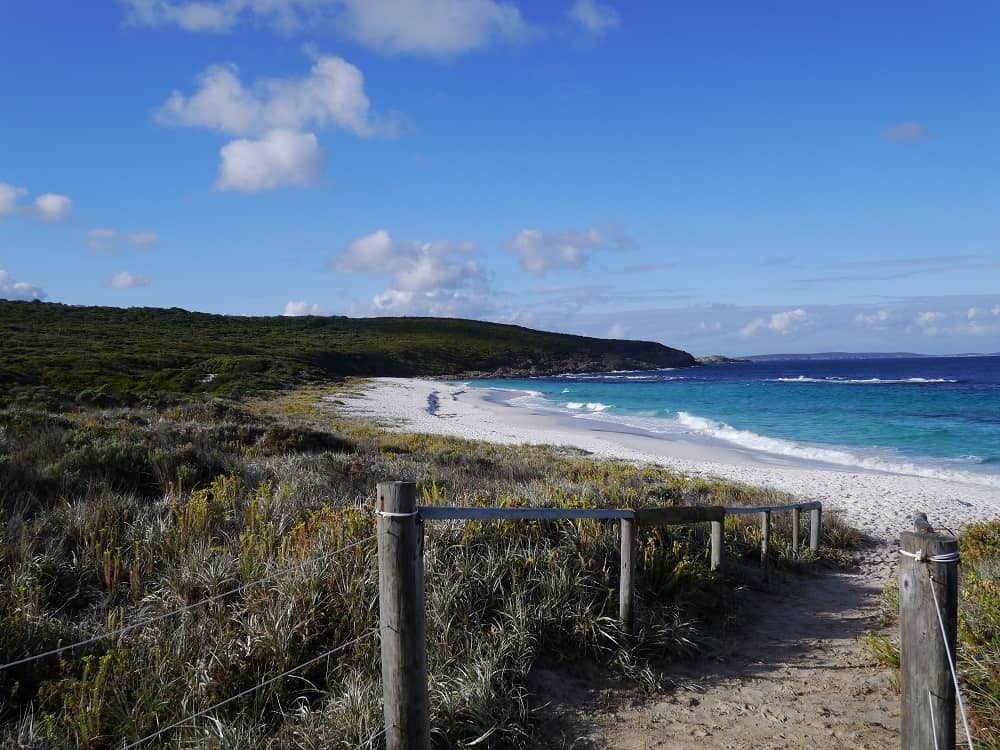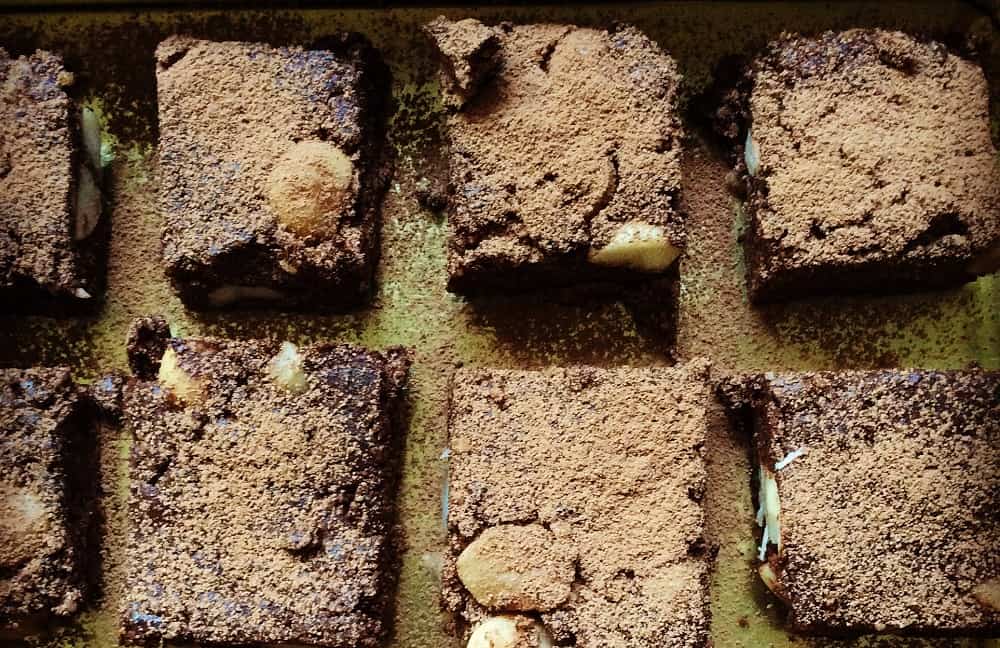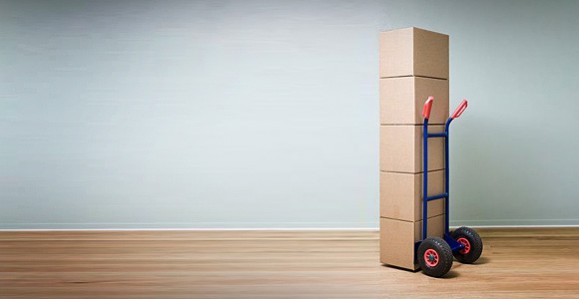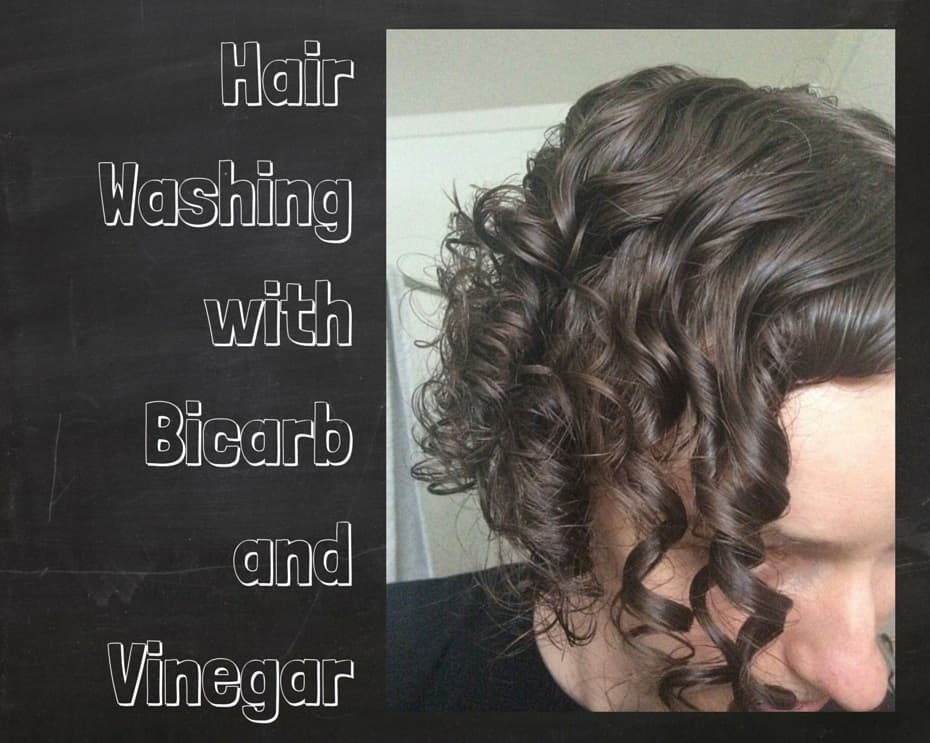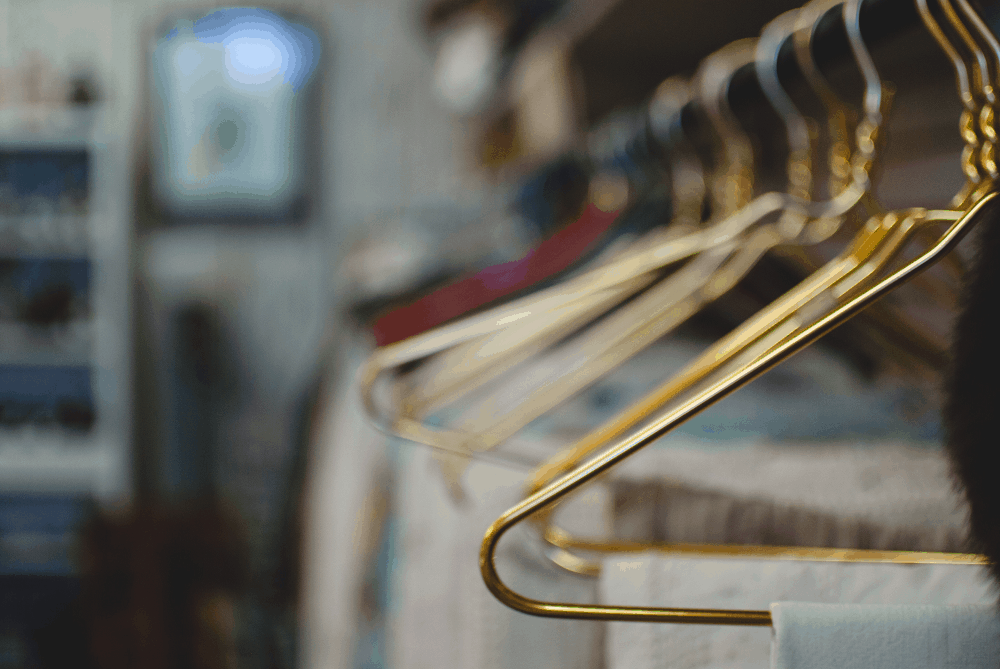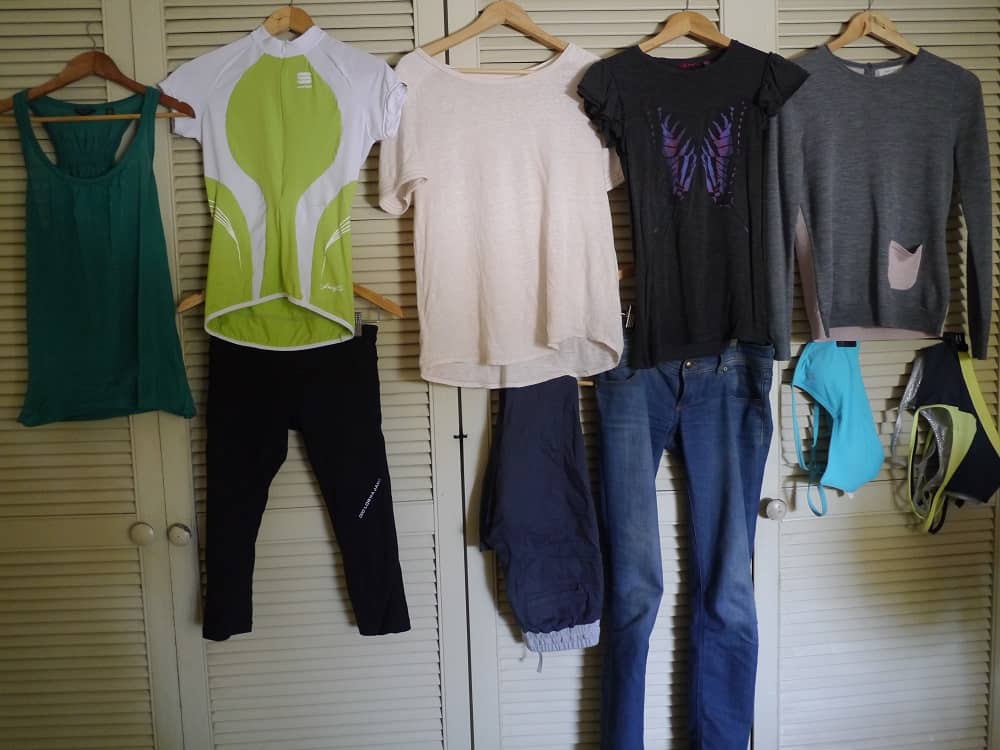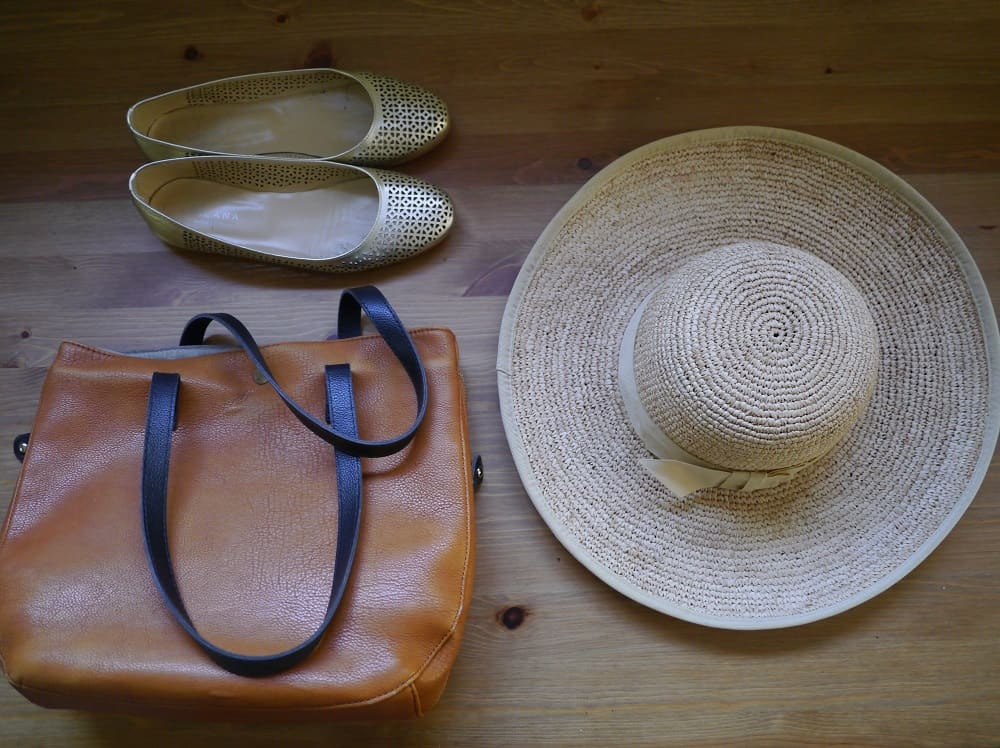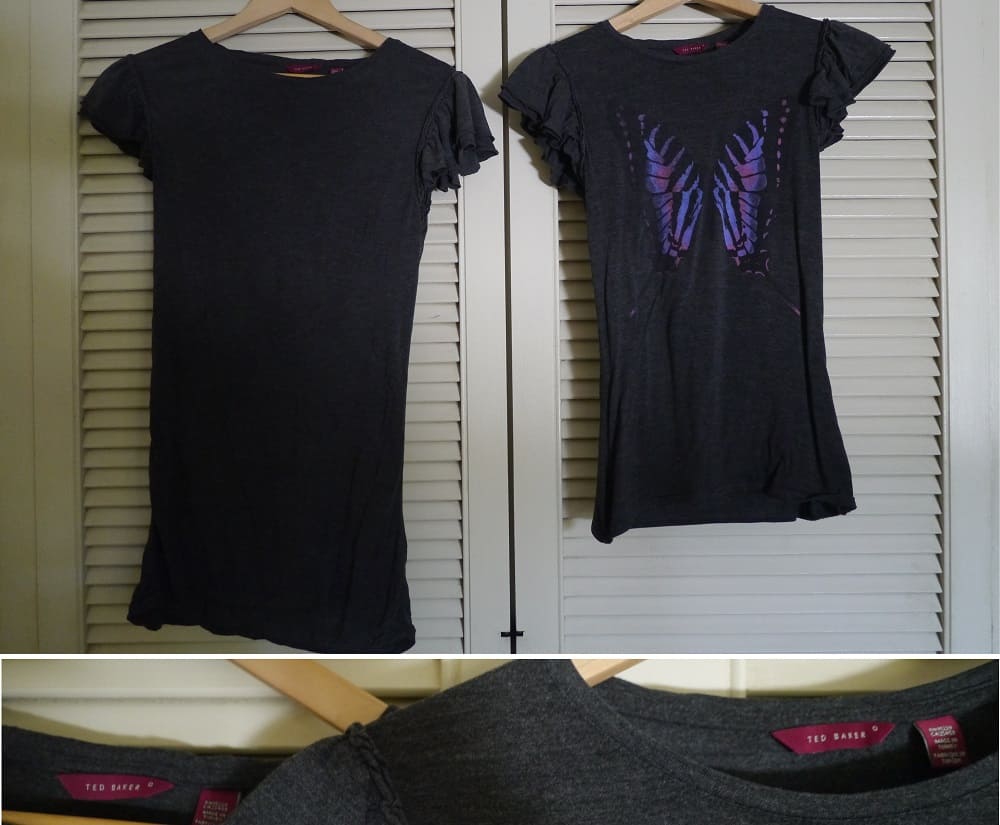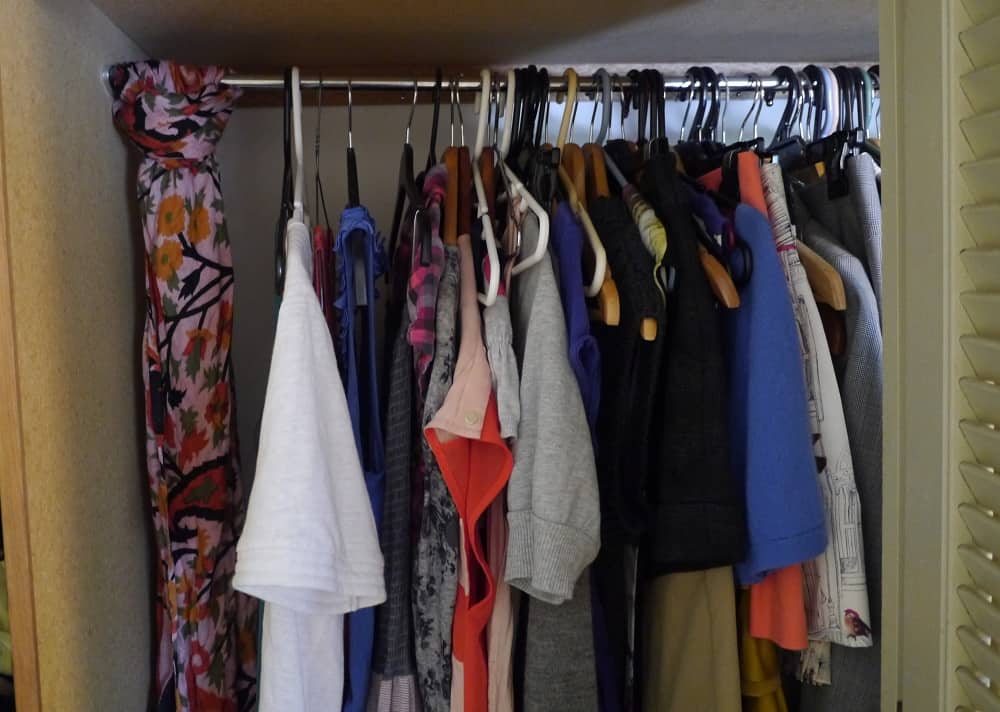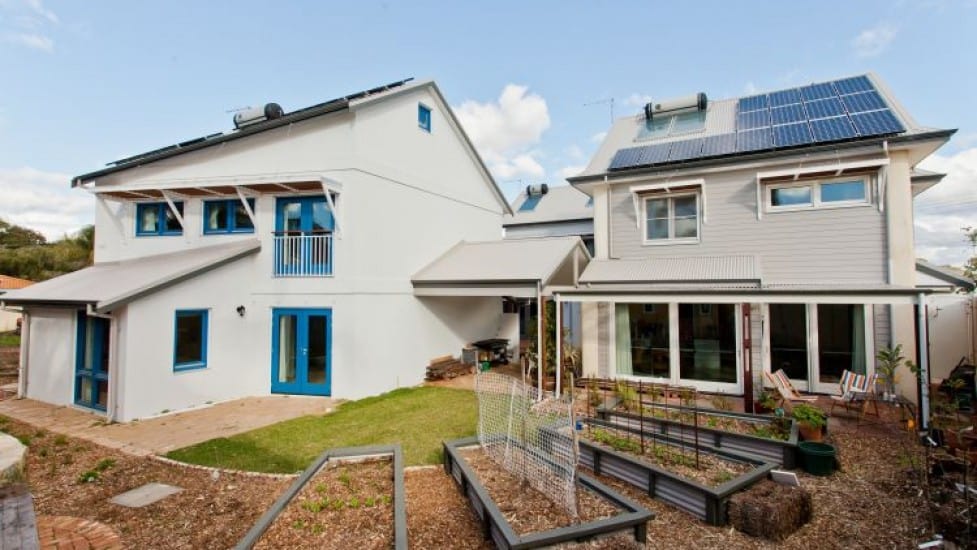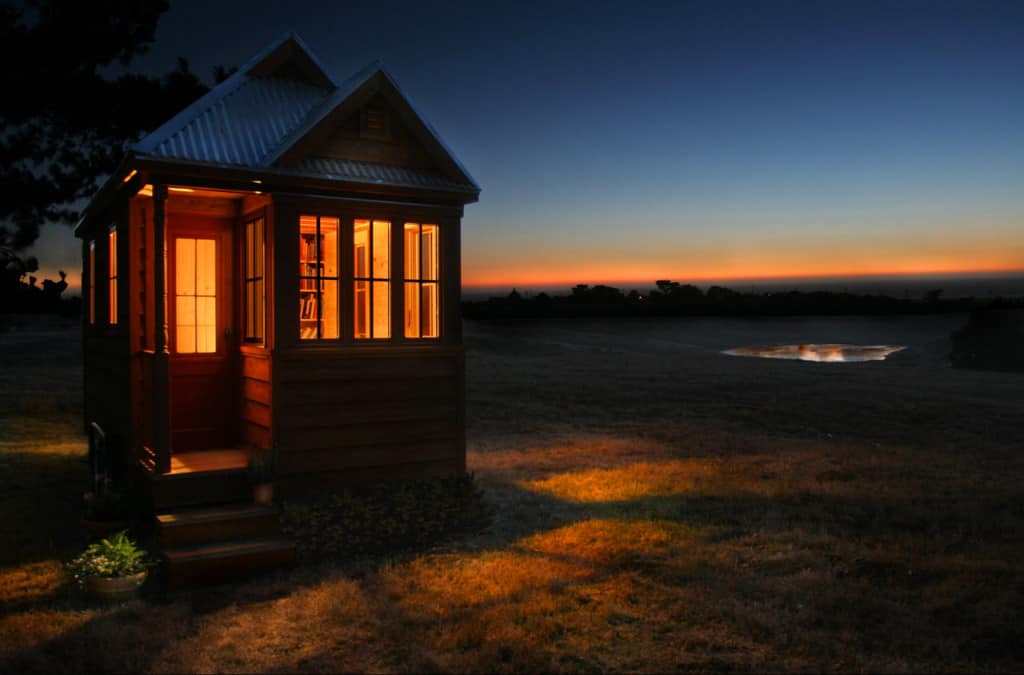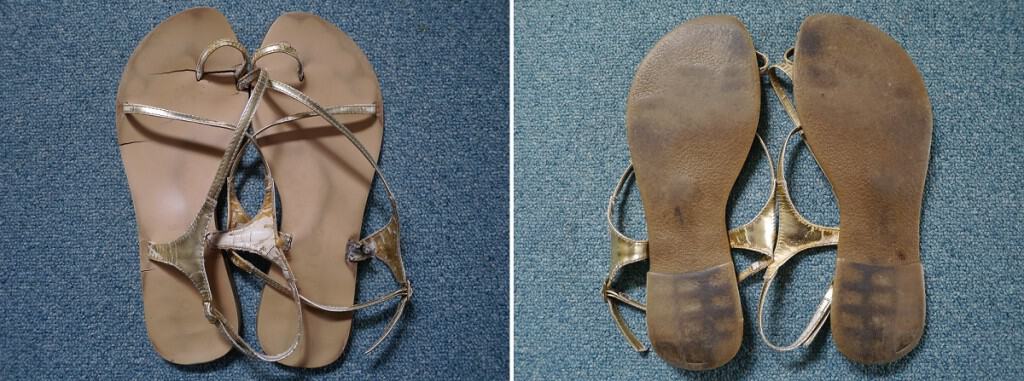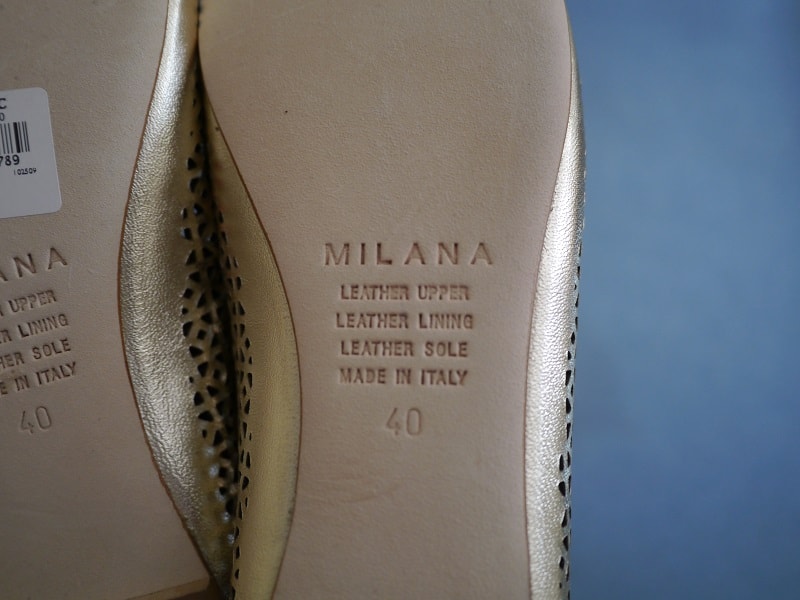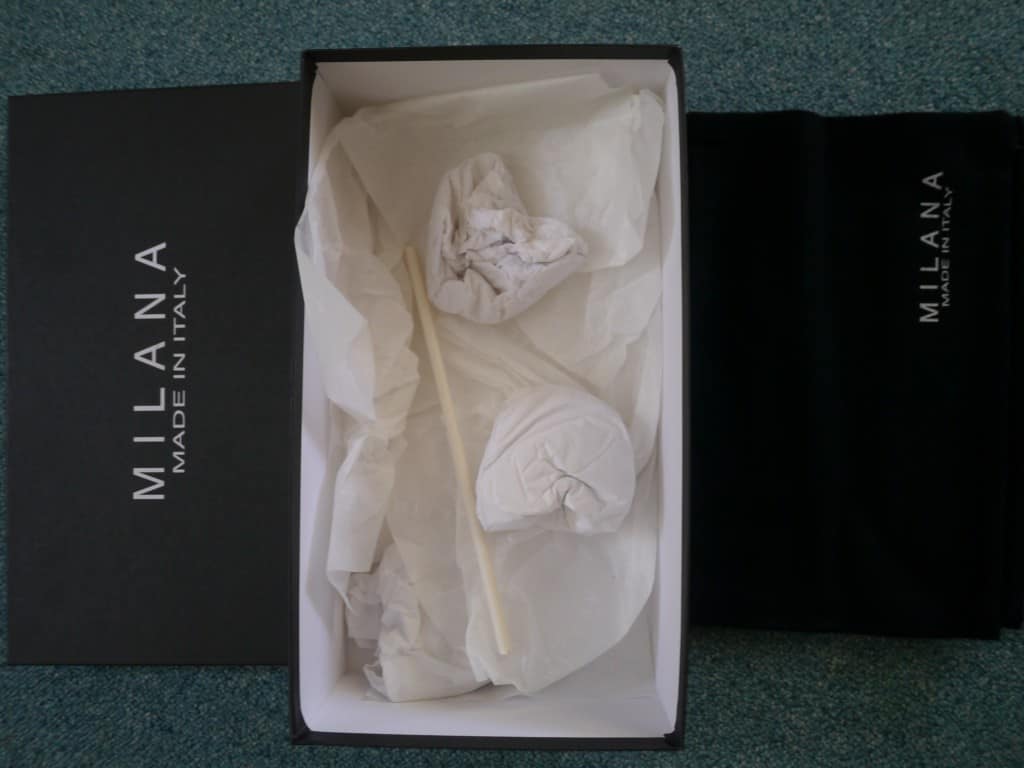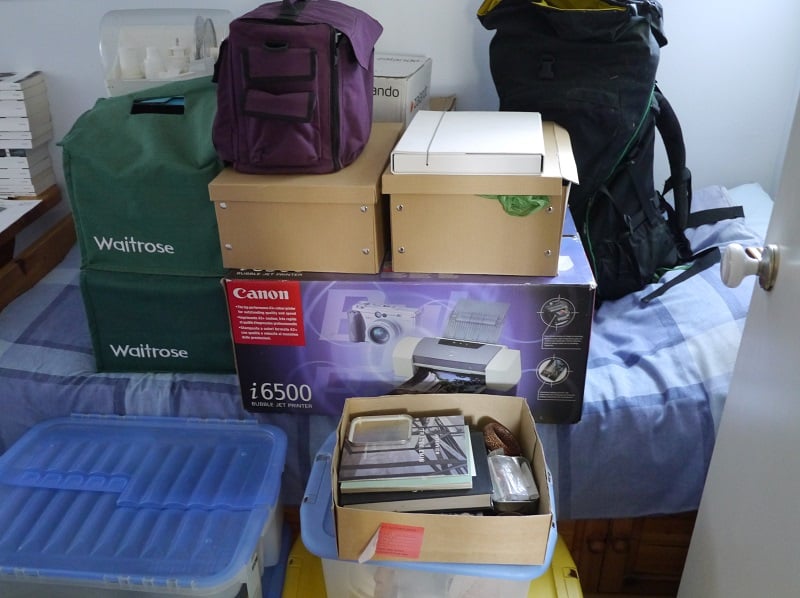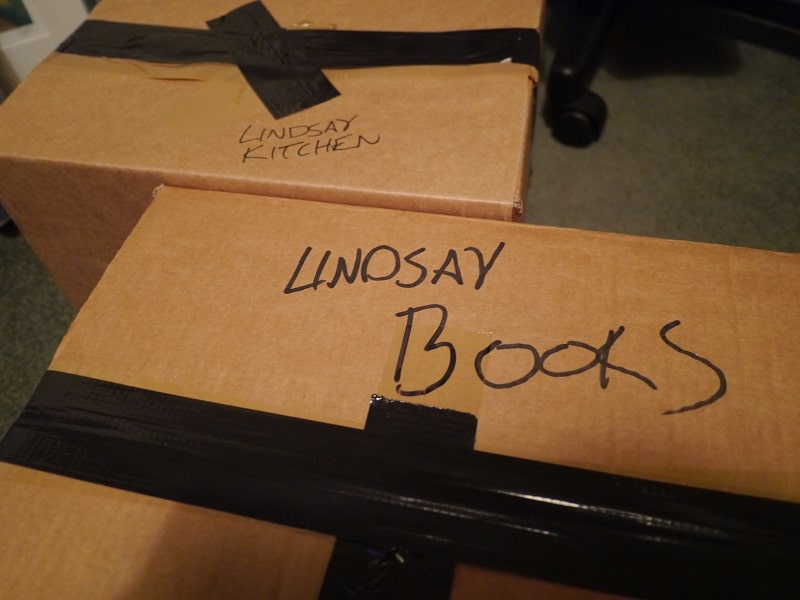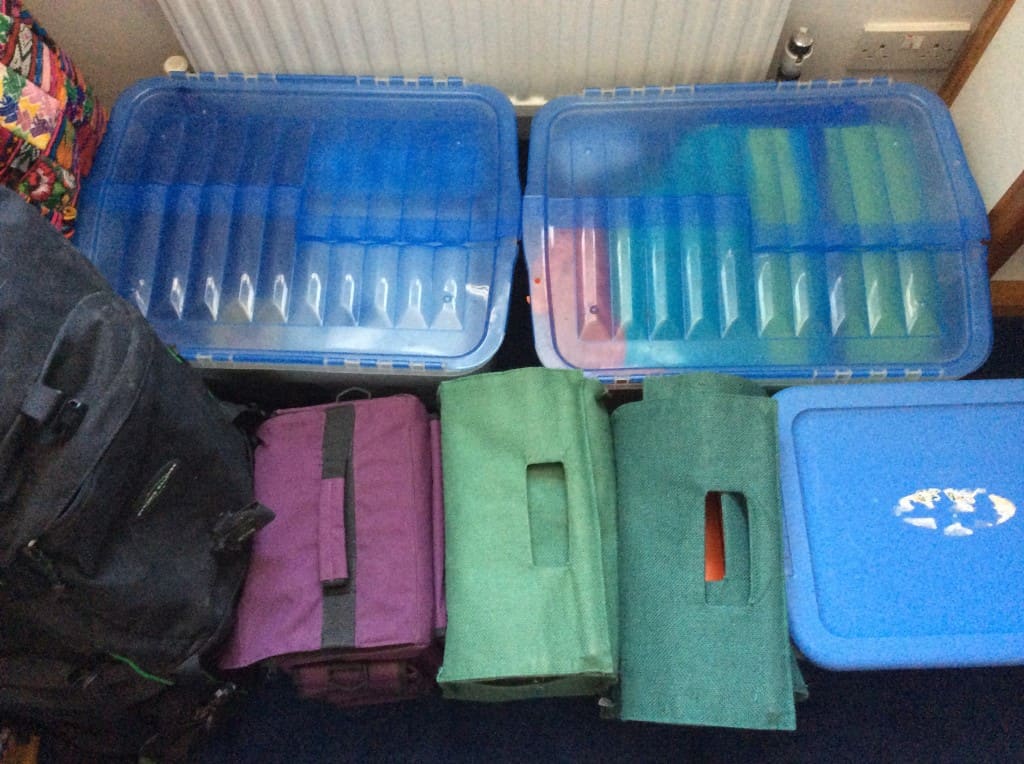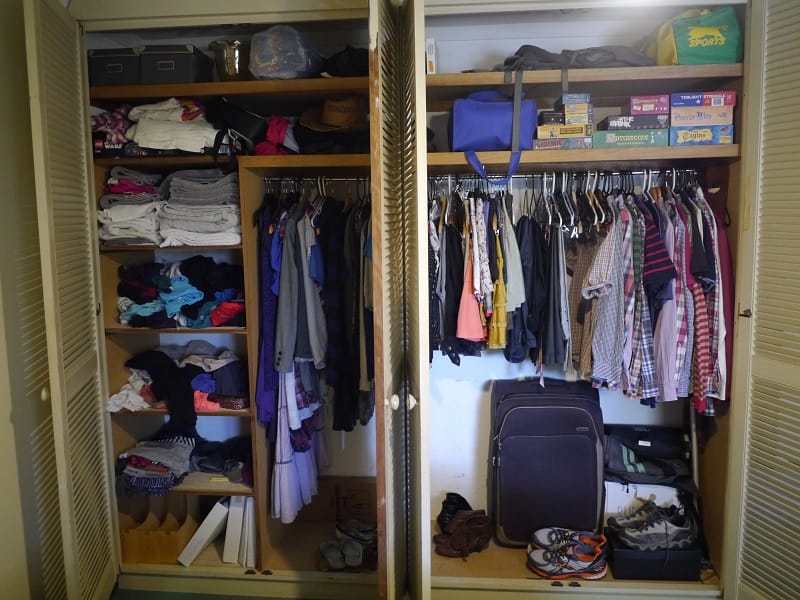I am a closet hoarder. It’s true. My wardrobe is far too full of things I never wear, and things I know I’ll never wear, and yet I struggle to get rid of them. On my path towards minimalism, my wardrobe is the elephant in the room, showcasing my hoarding tendencies.
Over the last two years I’ve got better at letting go and living with less. The stuff we buy and accumulate has many costs beyond the initial outlay, and recognising this has helped us step off the consumer treadmill, and stops us getting more. Understanding the emotions behind decluttering, the reasons why getting rid of stuff can be so hard, makes it easier to be kind to ourselves and know that letting go takes time.
This post should have been entitled “The Great Wardrobe Cull”. I’ve been thinking about my big wardrobe cull for a month or so, focusing on my intention to cut the number of items in my wardrobe in half. When it came to it, though…I couldn’t do it. I couldn’t get rid of half my things. Fifty per cent was just too much… even though I do probably only wear half of what I own. There’s still some things that I’m not ready to let go of. You’d think it would be easy – I want to have less, I have items in my wardrobe I am unlikely to wear again, and yet I cannot let them go. I still need to give it more time. Decluttering and my minimalist journey teaches me a lot about patience, if nothing else!
In spite of this, I’m pleased with my progress. There’s less now than when I started, and I’m also very clear on exactly what I own, what I have far too much of and potentially what I need more of (meaning I will replace less useful things with more useful things as they wear out). I have a good idea of what my future wardrobe should look like, based on things that are practical and that I will actually wear.
Here’s a guide to carrying out your own wardrobe cull, based on what worked for me. It took a couple of hours because I was taking photos, but I’d recommend it if you want to do your own wardrobe cull because you’ll know exactly what you own, and you can use the pictures for reference later on when everything is packed away. In the past I’ve written a list, but after a few days it just becomes a meaningless list of numbers – if you don’t lose it first, that is. Pictures are the way to go!
The (Not-So) Great Wardrobe Cull
Step 1: The Clothes Audit
How you do this might depend on how you store your clothes, but it’s best to be methodical. If you can, use another room rather than the bedroom. It may seem like more of a chore but it will also realise that you have too much stuff!
Group your clothes into categories. I grouped mine into: underwear drawer (smalls, tights, swimwear); T-shirt drawer (casual tops, shorts); smart tops; skirts; dresses; and trousers.
Work through each category one at a time.
Take a picture, and then make a note of the numbers of everything you own for that category. Remember to add anything in the laundry to your list!
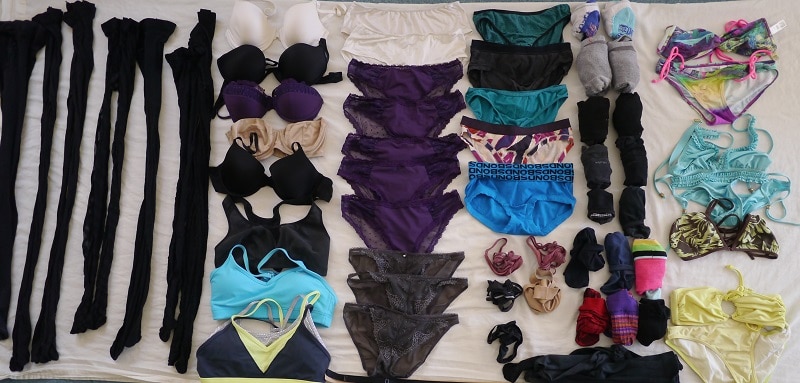
7 pairs of tights, 8 bras, 20 pairs of underwear, 16 pairs of socks plus 7 odd socks, all with holes, and 4 bikinis.
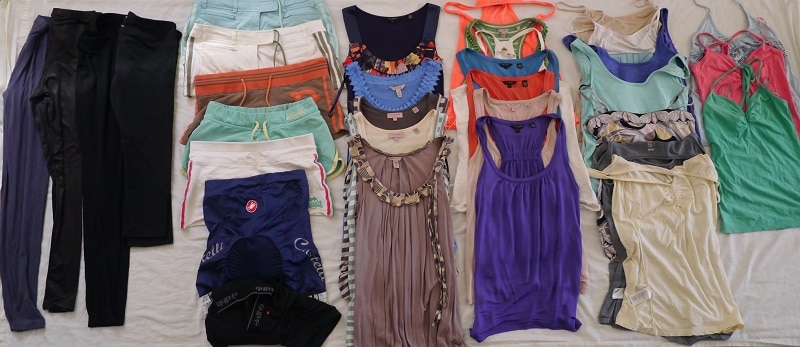
4 pairs of leggings (one for exercise), 7 pairs of shorts, 5 sleeveless tops, 7 racer back tops, 8 vest tops and 3 halterneck tops.
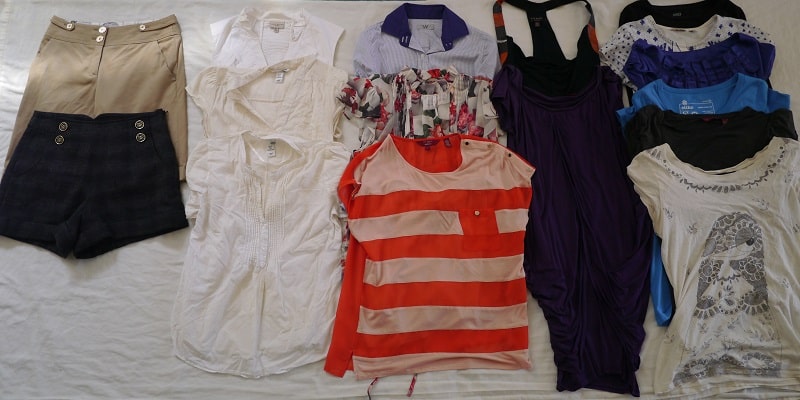
2 pairs of smart shorts, 3 white shirts, 2 blouses/shirts, 2 irregular tops, and 6 tee shirts.
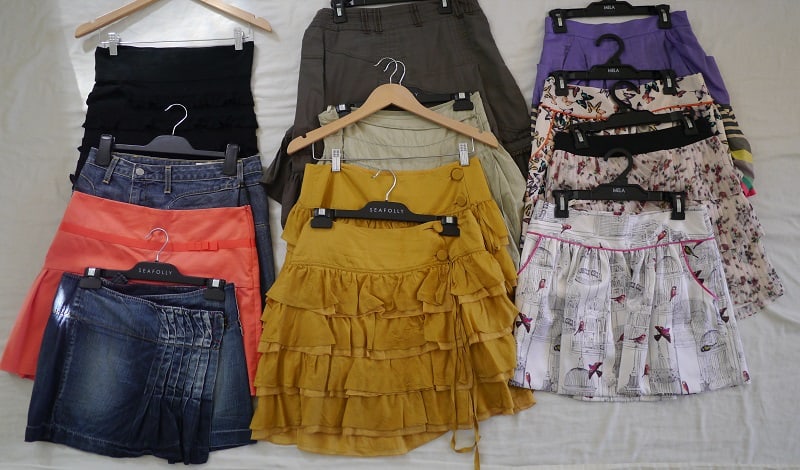
12 skirts. Yes, I have two skirts that are exactly the same. The ones on the right I like, but are really hard to find matching tops to go with, so I never wear.
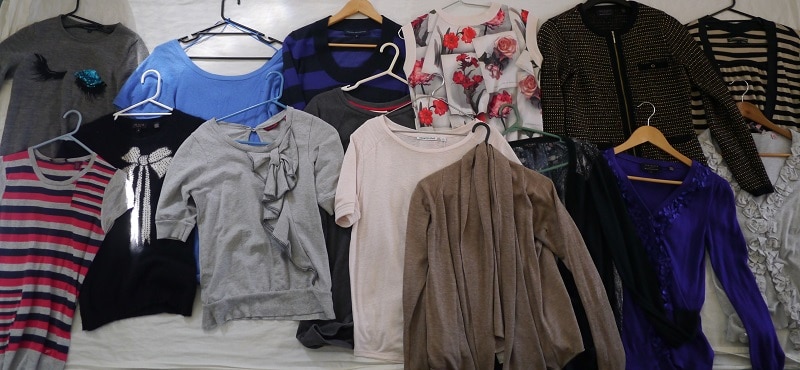
2 long-sleeved jumpers, 7 short-sleeved jumpers, and 7 cardigans.
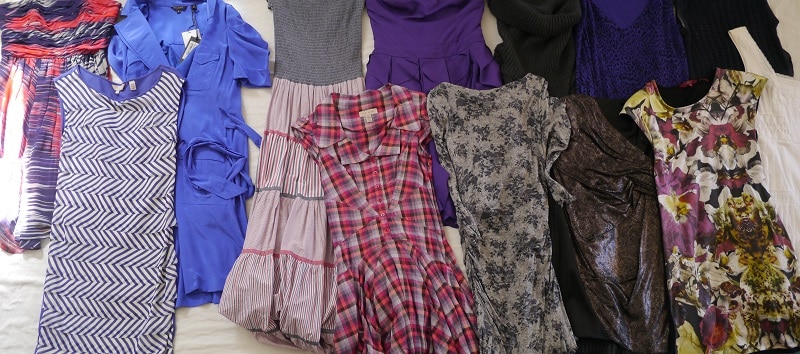
13 dresses, of which I regularly wear… none.
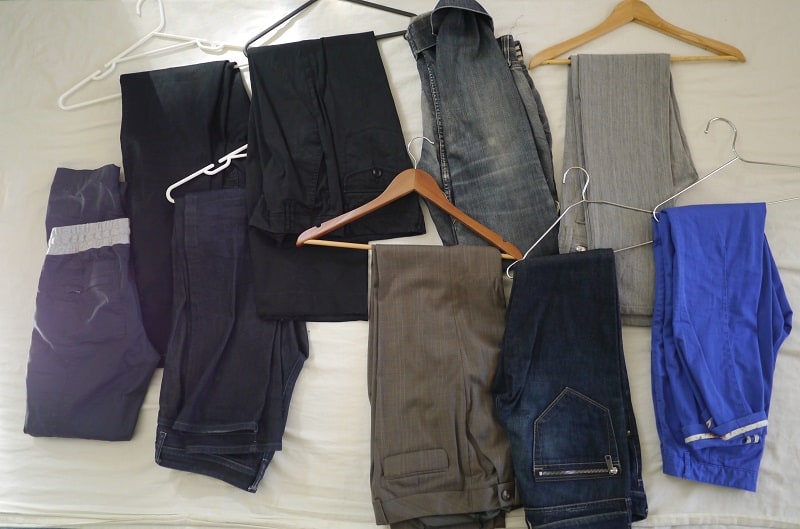
1 pair tracksuit bottoms, 2 pairs black trousers, 1 pair of smart trousers, and 5 pairs of jeans.
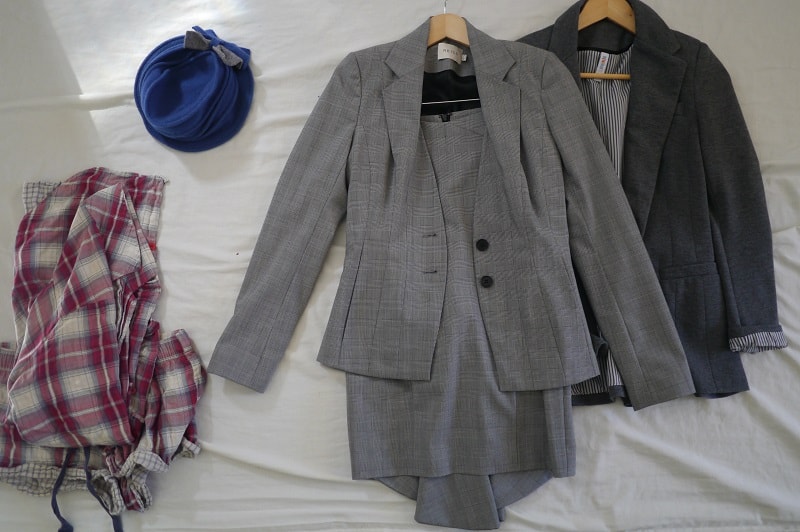
All the other bits and pieces… pyjama top and shorts, a hat, a skirt suit, and a blazer.
Step 2: The Cull
Once I’d taken a picture of a category, I looked long and hard at what was there, and asked myself what I was happy to get rid of.
Questions to ask:
- Does it fit?
- Is it broken?
- Could it be repaired or is it too worn?
- Do I ever wear it, and am I likely to wear it again?
- Is it practical?
- Do I have too many of this type of item?
I had items that were broken and beyond repair, items that were way too small (and had been for several years), and a top that I never wear because I don’t have a bra that works with it. I hate bra straps showing! I also had items I didn’t really like.
Do a recount once you’ve decided what you’re ditching and make a note of the new numbers.
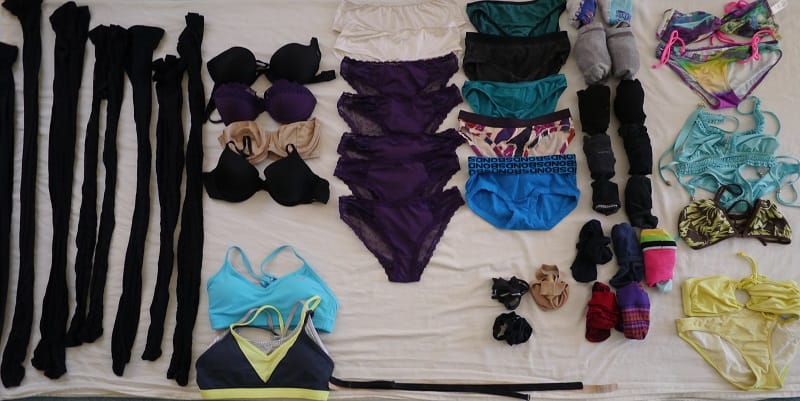
I got rid of three bras (one broken, two very uncomfortable), 5 pairs of underwear that don’t fit, and 1 pair of socks plus the 7 odd ones.
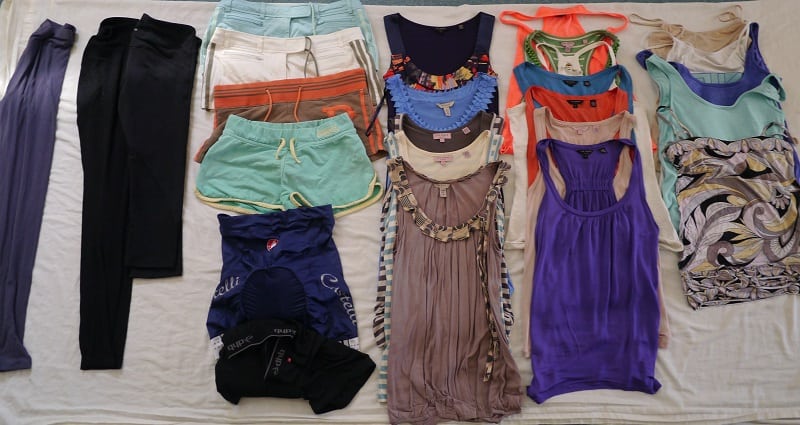
Reduced by 1 pair of leggings, 1 pair of shorts, and 5 tops.
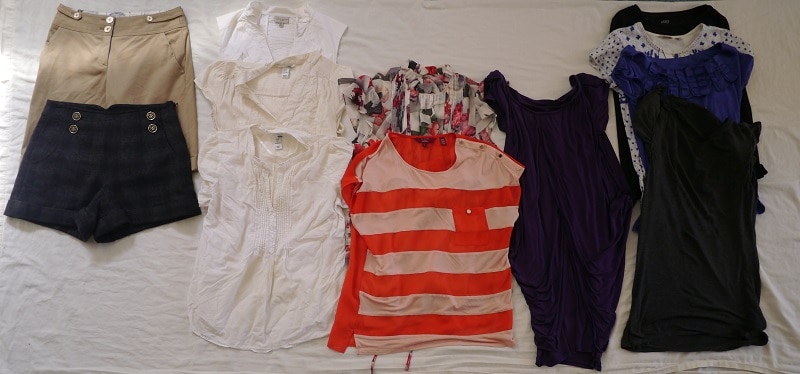
Reduced by 1 T shirt, 1 strange top that I never wear and 1 shirt that is too tight.
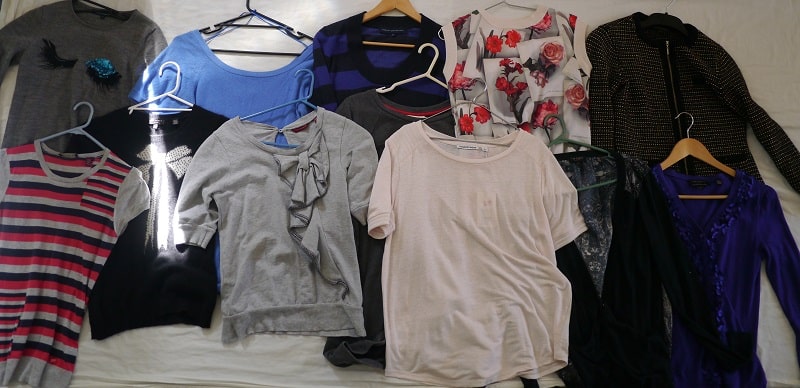
Reduced by 1 long-sleeved jumper (it is so worn you can pretty much see through it) and 3 cardigans.
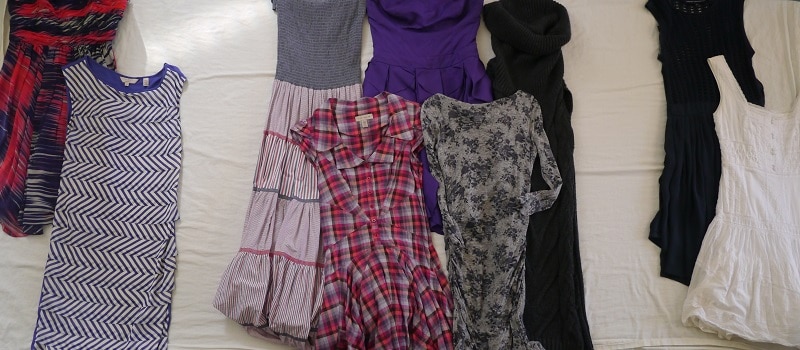
I reduced my dress hoard from 13 to 9, but I have a feeling that is still way too many for a tomboy like me!
Of the things I decided to get rid of, they were sorted into categories. Some of the new stuff I am going to see if I can sell on eBay. The better quality stuff or anything still in good condition is going to the charity shop. The stuff that’s tatty is going to be chopped up for cleaning cloths, bike rags and household use. The underwear, sadly, is going to have to go in the bin. I contemplated keeping it in case I ever fit into it, but it’s been 6 years so far (at least), so chances are I won’t.
Step 3: New Targets
Once I’d culled a category, I’d look at what was left and decide on what was a reasonable number of items to own. For example, I owned 13 dresses, and I probably wear dresses 6 times a year! I got rid of 4, but my target is to get down to 6. Once I reach that target, I will possibly make it smaller.
However, it also made me realise where I have too little. I only have 2 long-sleeved jumpers, and one I am getting rid of because it is almost entirely worn through. I think it would be useful to have another – probably one I can use for exercise. No-one needs 7 short-sleeved jumpers though! Reducing these will balance it out.
My new targets:
3 x pairs tights
2 x bikinis
10 x pairs of underpants
4 x bras
8 x pairs of socks
3 x pairs leggings
4 x pairs of casual shorts
10 x casual tops
2 x pairs of smart shorts
1 x white shirt
1 x blouse
0 strange tops!
3 x short-sleeve T shirts
1 x long-sleeve T shirt
6 x dresses
4 x short-sleeve jumpers
2 x long-sleeved jumpers
3 x cardigans
7 x skirts
5 x trousers
2 x jackets
2 x suit (top and bottom)
1 x hat
2 x PJs
1 x thermals
How Did I Do?
At the start of the (Not-So) Great Wardrobe Cull, I owned 169 items (plus 7 odd socks that are all beyond repair). I managed to cull 30 items. No way near half, but almost as much as a load of washing!
I didn’t include shoes.
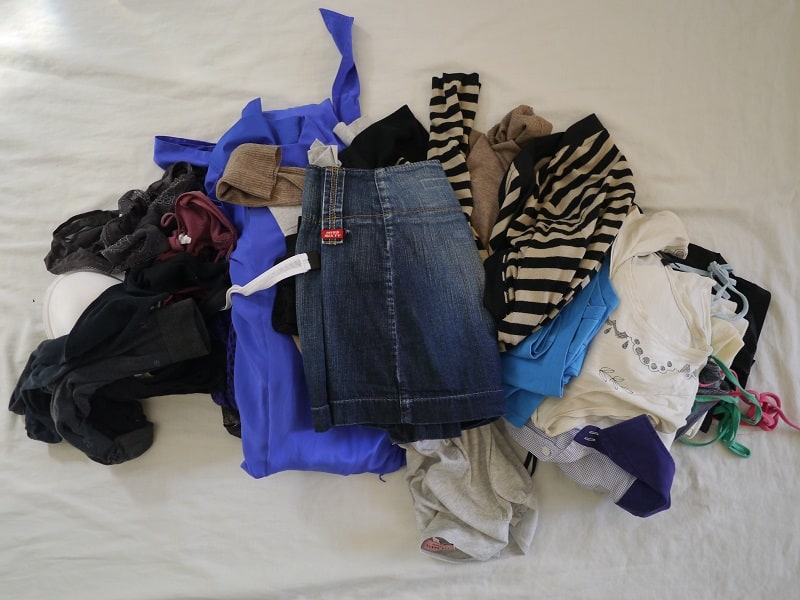
The final cull – enough to make almost a full load of washing!
When I added my targets up, it came to 90 items. That’s what I think I could manage with. Actually, I’m pretty sure I can manage with far less than that, but small steps! I think reducing my wardrobe down to 100 items would be a bit of a landmark moment. That means getting rid of another 40 items…
Now I want to hear from you! How would you do in a wardrobe audit? Do you think 100 items is a good amount, too few or way too many? Are you already a minimalist in the clothes department, or would you have absolutely no idea how many things you own? Are you up for a challenge?! Please leave a comment below!
[leadpages_leadbox leadbox_id=1429a0746639c5] [/leadpages_leadbox]




